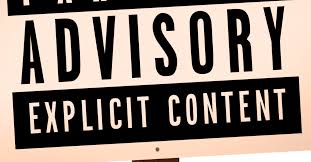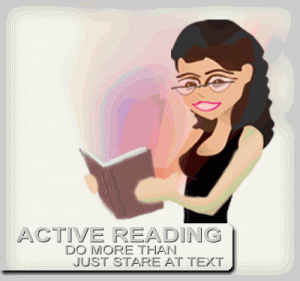Sample Reading:
Trigger Warnings
After you read the following article, return it to the table.
http://www.latimes.com/opinion/editorials/la-ed-trigger-warnings-20140331-story.html

Comprehension Questions
1. Define "trigger warnings."
2. What does the article mean when it explains that the "student resolution is only advisory"?
3. Where else have we seen the use of trigger warnings?
4. What is the position of The Times Editorial Board on this issue?
5. Identify one claim/argument that they use in order to support this position.
6. What two colleges/universities does the article discuss?

Exchange and grade comprehension questions
The Verdict: Are you an active reader?
Active Reading
What does it mean to be an active reader?
What are some practices we must adapt to be active readers? (WOW chapter 4)

Another important tip to keep in mind:
Pace Yourself: Know Your Limitations and Eliminate Distractions
Don't try to fool yourself. You know what you can accomplish.
The "TO DO" list.
When is the best time to read? Timing is everything.
Location. Location. Location.
You can’t hike the Appalachian Trail in a day. Similarly, you can’t expect to sustain active reading longer than your mind and body will allow. Active reading requires energy and attention as well as devotion. Short rest periods between readings allow you to maintain focus and deliberate on what you have learned. If you remain diligent in your reading practice, you’ll find that you can read actively for longer periods of time. But don’t push yourself past the point at which you stop paying attention. If your mind begins to wander, take ten minutes away from the text to relax. Ideally, you should read gradually, scheduling an hour or two every day for reading, rather than leaving your assignments until the last minute. You can’t hope to gain full or even partial comprehension of a text with a deadline looming overhead.
When and where you read can be as important as how long you read. Plan your reading sessions for hours when your mental energy is at its height—usually during daylight hours. Likewise, you should select an optimal location, preferably one free of distractions. Loud music, the flickering of a TV screen, and the din of conversation tend to divert your attention from the task at hand. Even a momentary distraction, like a quick phone call or a friend asking a question, can interrupt the conversation you are having with your assigned text.
http://writingcommons.org/index.php/open-text/information-literacy/critical-reading-practices/766-active-reading
Active Reading
First Step: Comprehension
Summary
WOW pages 70-71
http://www.latimes.com/opinion/editorials/la-ed-trigger-warnings-20140331-story.html

Reading to Write: Summarizing
Summarizing a text, or distilling its essential concepts into a paragraph or two, is a useful study tool as well as good writing practice. A summary has two aims: (1) to reproduce the overarching ideas in a text, identifying the general concepts that run through the entire piece, and (2) to express these overarching ideas using precise, specific language.
When you summarize, you cannot rely on the language the author has used to develop his or her points, and you must find a way to give an overview of these points without your own sentences becoming too general. You must also make decisions about which concepts to leave in and which to omit, taking into consideration your purposes in summarizing and also your view of what is important in this text.
Here are some methods for summarizing:
a. Include the title and identify the author in your first sentence.
b. The first sentence or two of your summary should contain the author’s thesis, or central concept, stated in your own words. This is the idea that runs through the entire text--the one you’d mention if someone asked you: “What is this piece/article about?” Unlike student essays, the main idea in a primary document or an academic article may not be stated in one location at the beginning. Instead, it may be gradually developed throughout the piece or it may become fully apparent only at the end.
c. When summarizing a longer article, try to see how the various stages in the explanation or argument are built up in groups of related paragraphs. Divide the article into sections if it isn’t done in the published form. Then, write a sentence or two to cover the key ideas in each section.
d. Omit ideas that are not really central to the text. Don’t feel that you must reproduce the author’s exact progression of thought. (On the other hand, be careful not to misrepresent ideas by omitting important aspects of the author’s discussion).
e. In general, omit minor details and specific examples. (In some texts, an extended example may be a key part of the argument, so you would want to mention it).
f. Avoid writing opinions or personal responses in your summaries (save these for active reading responses or tutorial discussions).
g. Be careful not to plagiarize the author’s words. If you do use even a few of the author’s words, they must appear in quotation marks. To avoid plagiarism, try writing the first draft of your summary without looking back at the original text.
Comments (0)
You don't have permission to comment on this page.